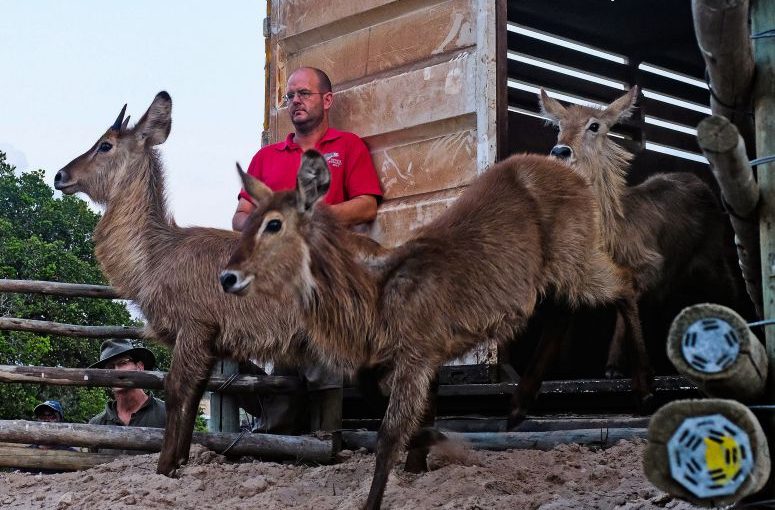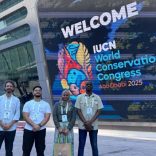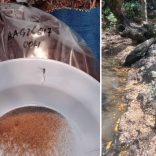Mozambique: BIOFUND participates in the IUCN World Conservation Congress 2025 in Abu Dhabi
Mozambique: Waterbucks make 1,000km journey to new home in Maputo Special Reserve

Picture: Lusa
More than 160 waterbucks, a species of antelope known locally as ‘piva’, are stepping out for the first time in the territory where they are to live, in southern Mozambique, after a 36-hour journey by lorry of than 1,000 km.
Those who are caring for the animals are seeking to make sure that it was worth the effort.
The antelope were transferred from Gorongosa Park, in central Mozambique. They are the first of their kind in the Maputo Special Reserve (REM), just outside the capital.
They departed at 3 a.m. local time on Tuesday on board four lorries, in a convoy that kept to low speeds so as not to alarm the animals, one of the drivers explained to Lusa.
At 3 p.m. on Wednesday they arrive at the gates of the REM.
There, after the paperwork is completed, everything is readied for the animals to continue by dirt track to the place where they are to be freed, now with escort of four off-road vehicles and an agricultural tractor, to prevent any difficulties.
The journey lasts an hour, in clouds of dust but through a green landscape.
On arrival at the site, Natércio Ngovene of REM says that the operation brings a “good number of animals” from Gorongosa and that this is a good sign.
“We have already received animals from South Africa, but we are gaining conditions domestically,” he says. “In Gorongosa we are having enough species to repopulate other conservation areas within the country.”
The motorcade arrives on a small hill, so that the animals come out of the lorries and down into their new home.
The doors open, but no one wants to be the first to leave.
The group that is monitoring the operation, two dozen people, prepares to take photos of the moment, but the more experienced say that the antelope’s nervousness could mean that it will be several hours before they come out of lorries – beyond sunset, which at this time of year happens at 5.30 p.m.
Then the first group of seven tumble out and run into the brush, then others, until finally all have left. New home, old habits.
REM officials are expecting to receive at least 250 animals this year.
In June, 99 buffalo had already been brought in from South Africa’s Sabie Park, and in September another 82 waterbuck and 50 oribi (smaller antelopes) are expected to arrive from Gorongosa.
“This year we started the census of the fauna and soon we will have a report to quantify the number of animals,” says Ngovene, adding that poaching is “under control”.
The project to develop conservation and biodiversity areas in Mozambique, known as Mozbio, and the Peace Parks foundation oversaw the transfer of antelope, under an agreement with the REM.
The reserve, 68 km from the capital, occupies an area of 1,040 km2 on the Indian Ocean. It was established in 1960.
The species conserved there include elephants, gnu, kudu, crocodile, nyala, hippopotamus and various birds.
Mozambique’s government and partners have been implementing several projects to preserve the area’s ecosystem, which is seen as an important sanctuary for wildlife.













Leave a Reply
Be the First to Comment!
You must be logged in to post a comment.
You must be logged in to post a comment.